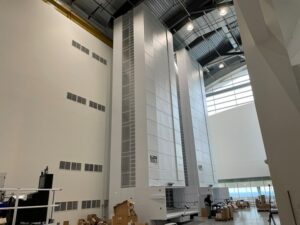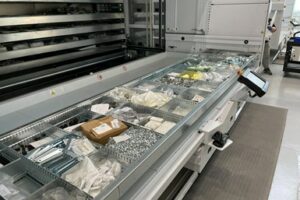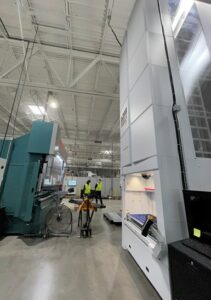This article by Peter Zelinski originally appeared in Modern Machine Shop magazine.

What is the most labor-intensive task manufacturing employees perform? Even in sophisticated manufacturing facilities using a high degree of automation, the answer might be this: look for stuff. That is, seek and obtain the items they need to do their work.

Storage unintentionally creates drains on time and effort. The best thing to do with bulky resources that are not required immediately for production is to get them out of the way, and the most natural way to do this is to store them on shelves. But then, when the resource is again needed — whether the resource is a tool, raw material, a set of fasteners or other supplies — the one who needs it will have to go to the shelves to get it; search the shelves to find it; and likely enlist the aid of someone with a towmotor in order to retrieve it.
Increased recognition of this drain on capacity is spurring the adoption of automated storage and retrieval systems, says Antonio Pagano, CEO of Modula USA, a provider of vertical storage systems manufactured to order for industrial facilities (tailored, for example, to the extent of a facility’s available ceiling height). Shelves, as companies are coming to see, represent an important opportunity for automation.

This is a distinctly North American insight. “In Europe, we had a leg up because of floorspace limitations,” he says. Modula was founded in Italy. Among their earliest adopters, the company’s systems made sense as a solution for using plant space more efficiently. But in North America, floorspace is more available; preserving it is less of a concern. Yet there is a growing premium on employee attention and labor hours. “In the U.S., we started to make inroads once we realized floorspace is not the issue — we have an automation solution instead.”
In fact, an automated storage and retrieval system is a foundation for widespread automation throughout the facility. Each system consists of a vertical set of moving trays (in vertical increments of 200 mm, but variable for objects of different heights), with each shelf delivered as needed to a fixed retrieval area at human level near the base of the system. Delivering every stored object to the same location creates a natural fit with other automation systems. Example: A robot could retrieve an item from the vertical system and place it on an automatic guided vehicle for delivery where it is needed.
But as much as it is a foundation for plant-wide automation, the automated storage and retrieval system is also a foundation for Industry 4.0. As Pagano notes, data from the unit provide both greater control over, and greater insight into, the production process.
What Are the Limits to Make-to-Order Manufacturing?

“You can restrict particular employees to particular trays,” he says. “You can also track how many times a given object is retrieved.” An example of this is in use in Modula’s production facility in Franklin, Ohio. An automated storage and retrieval system holds tooling for a nearby press brake. Tracking the retrieval for each press brake die allows the engineering team to know precisely when each tool is nearing the end of its expected life.
This last point might prove to be the ultimate reason why the automated systems are adopted, Pagano says. Floorspace is valuable. Labor is more valuable still. But in an environment of increasingly more tightly controlled production of increasingly valuable products, the knowledge of how a shop’s resources are being deployed might be the most valuable benefit of all.